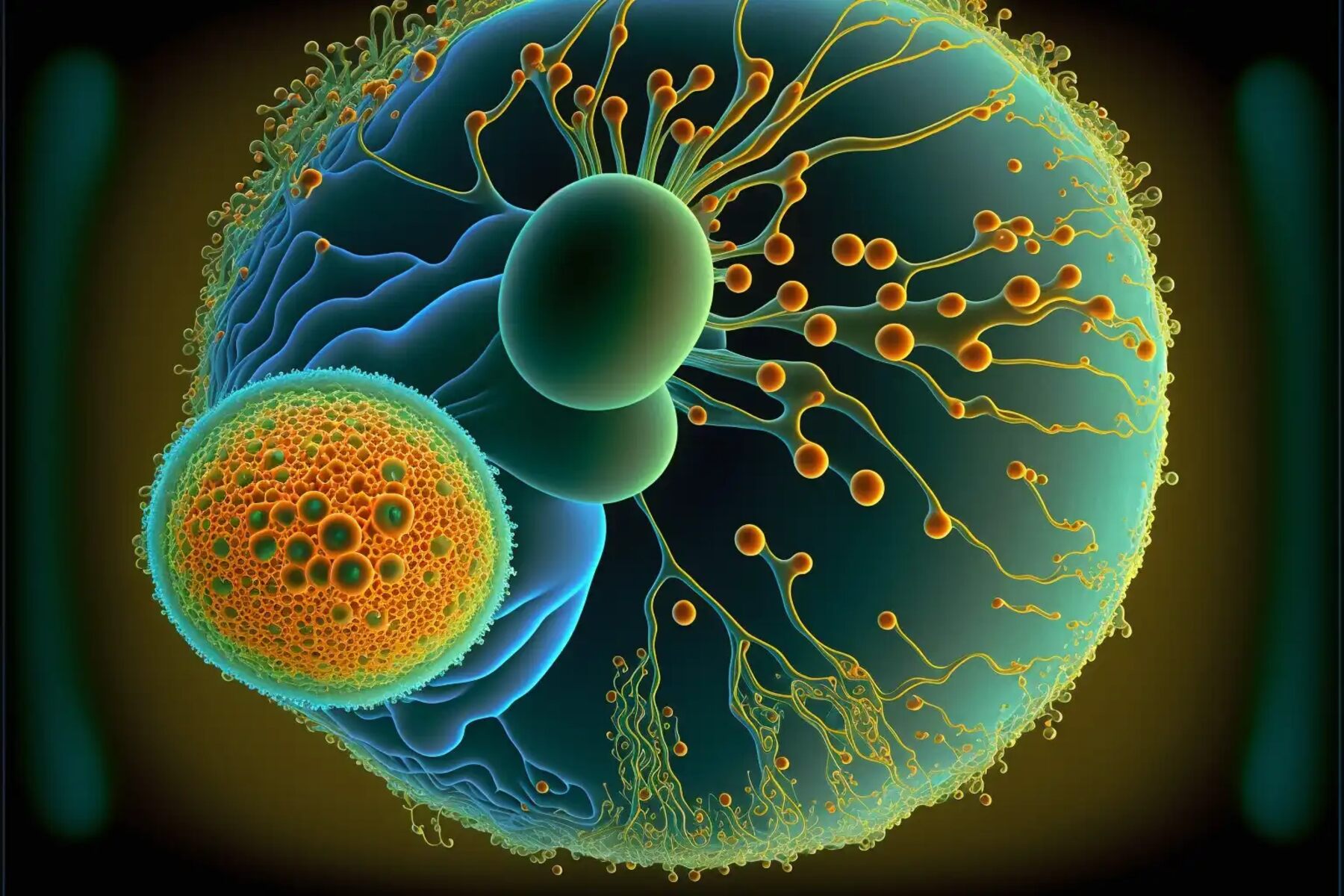
Stem cell differentiation is a fascinating process that plays a critical role in the development and maintenance of multicellular organisms. Stem cells have the unique ability to differentiate into specialized cell types, giving rise to various tissues and organs in the body. This extraordinary property has captured the attention of scientists and researchers worldwide, leading to groundbreaking discoveries and advancements in the field of regenerative medicine.
In this article, we will explore 17 extraordinary facts about stem cell differentiation that will not only deepen your understanding of this intricate process but also showcase the remarkable potential it holds for medical interventions. From the incredible plasticity of embryonic stem cells to the discovery of induced pluripotent stem cells, get ready to delve into the awe-inspiring world of stem cell differentiation.
Key Takeaways:
- Stem cell differentiation is the process of unspecialized cells transforming into specific cell types, crucial for tissue repair and organ development. It’s like a magical recipe for creating different cell superheroes in our bodies!
- Scientists can control and guide stem cell differentiation in the lab, opening doors for potential treatments and regenerative medicine. It’s like having a secret potion to create specific cells for healing and fighting diseases!
Stem cell differentiation is governed by various factors.
The differentiation of stem cells is regulated by a combination of intrinsic genetic factors and extrinsic signals from the microenvironment.
Differentiation can result in the formation of various cell types.
Stem cell differentiation can give rise to a wide range of cell types, including nerve cells, muscle cells, blood cells, and even specialized cells in organs like the heart and liver.
Stem cells have the remarkable ability to self-renew.
While differentiating, stem cells also retain the ability to self-renew, ensuring a constant supply of undifferentiated cells for tissue repair and regeneration.
Stem cell differentiation is coordinated by master regulators.
Certain transcription factors act as master regulators to orchestrate the process of stem cell differentiation, controlling the activation or repression of specific genes.
Lineage commitment is a critical step in differentiation.
Before fully differentiating into a specific cell type, stem cells undergo lineage commitment, where they become restricted to a particular developmental pathway.
Stem cell differentiation can be induced in the laboratory.
Scientists have developed techniques to induce the differentiation of stem cells in the lab, allowing them to generate specific cell types for research, drug discovery, and regenerative medicine.
Differentiation can be guided by specific culture conditions.
The culture medium and growth factors used in the lab can be tailored to direct the differentiation of stem cells towards desired cell lineages.
Stem cell differentiation plays a crucial role in embryonic development.
During embryogenesis, stem cells differentiate into the various cell types that form the complex structures and organs of the developing embryo.
Differential gene expression drives cell specialization.
As stem cells differentiate, specific genes are turned on or off, leading to the activation of distinct molecular pathways that drive cell specialization.
Stem cell differentiation can be reversible.
In certain cases, differentiated cells can be reprogrammed back into a stem cell-like state through a process called dedifferentiation.
Epigenetic modifications play a role in differentiation.
Epigenetic modifications, such as DNA methylation and histone modifications, contribute to the regulation of gene expression during stem cell differentiation.
Stem cell differentiation can be influenced by neighboring cells.
The cellular microenvironment, including neighboring cells and extracellular matrix, can influence the fate and direction of stem cell differentiation.
Differentiation can be asymmetric.
In some cases, stem cell division during differentiation can result in two daughter cells with distinct fates, leading to asymmetric cell division.
Stem cell differentiation is not limited to embryonic stem cells.
Adult stem cells in various tissues retain the ability to differentiate and contribute to tissue repair and regeneration.
Differentiation can be enhanced by physical cues.
Physical factors like substrate stiffness, topography, and mechanical forces can influence stem cell differentiation and tissue morphogenesis.
Stem cell differentiation can be guided by biochemical signals.
Chemical signals, such as growth factors and signaling molecules, play a crucial role in guiding the differentiation of stem cells into specific cell types.
Stem cell differentiation holds promise for medical advancements.
The ability to control and manipulate stem cell differentiation opens up possibilities for regenerative medicine, tissue engineering, and potential therapies for various diseases and injuries.
These 17 extraordinary facts about stem cell differentiation highlight the complex and remarkable process by which stem cells give rise to the incredible diversity of cell types in our bodies. Understanding the mechanisms underlying differentiation is not only crucial for scientific research but also paves the way for innovative medical interventions in the field of regenerative medicine.
Conclusion
In summary, stem cell differentiation is a fascinating process that allows for the development of specialized cells in the body. Through various mechanisms and factors, stem cells can transform into different cell types, contributing to tissue repair and regeneration. It is truly extraordinary how these cells can adapt and change, ensuring the proper functioning of our bodies.
As researchers continue to unravel the complexities of stem cell differentiation, it opens up new opportunities for medical advancements and treatments. Harnessing the power of stem cells holds great promise for tackling diseases and conditions that were once considered incurable. The potential for personalized medicine and regenerative therapies is immense, offering hope for a healthier future.
Understanding the remarkable facts about stem cell differentiation not only expands our knowledge but also ignites our curiosity to explore this field further and unlock its full potential. With ongoing research and advancements, we can anticipate even more extraordinary findings in the realm of stem cell biology.
FAQs
Q: What is stem cell differentiation?
A: Stem cell differentiation refers to the process by which unspecialized cells, known as stem cells, transform into specialized cells with specific functions in the body.
Q: How do stem cells differentiate?
A: Stem cells differentiate through various mechanisms, including signals from their surrounding environment, genetic programming, and interactions with specific proteins and molecules in the body.
Q: What are the different types of stem cell differentiation?
A: Stem cells differentiate into three main types: totipotent, pluripotent, and multipotent. Totipotent cells can develop into any type of cell in the body, while pluripotent cells can differentiate into almost any cell type. Multipotent cells have a more restricted differentiation potential and can only develop into a specific range of cell types.
Q: Why is stem cell differentiation important?
A: Stem cell differentiation plays a crucial role in embryonic development, tissue repair, and regeneration. Understanding the mechanisms of differentiation can aid in the development of new therapies for various diseases and injuries.
Q: Can stem cell differentiation be controlled?
A: Researchers are working to understand how to control and manipulate stem cell differentiation. By identifying the factors and signals that influence differentiation, it may be possible to direct stem cells towards specific cell types for therapeutic purposes.
Stem cell differentiation's extraordinary potential for medical breakthroughs is just one facet of cellular biology's wonders. Mitochondrial membrane potential's enigmatic influence on cellular function, tissue engineering's unbelievable advancements in creating living structures, and biotechnology's fascinating applications in various fields all showcase the marvels of life at its most fundamental levels. Exploring these captivating topics further unveils a world of scientific discovery that continually pushes boundaries and expands our understanding of the intricate mechanisms governing life itself. Embark on a journey through the awe-inspiring realms of cellular biology, tissue engineering, and biotechnology to uncover the secrets they hold.
Was this page helpful?
Our commitment to delivering trustworthy and engaging content is at the heart of what we do. Each fact on our site is contributed by real users like you, bringing a wealth of diverse insights and information. To ensure the highest standards of accuracy and reliability, our dedicated editors meticulously review each submission. This process guarantees that the facts we share are not only fascinating but also credible. Trust in our commitment to quality and authenticity as you explore and learn with us.


